Marine Strategic Nuclear Forces: Weigh Pros and Cons
This material was conceived as a continuation of articles devoted to the Soviet atomic heavy aircraft carrier cruiser Ulyanovsk, links to which will be given below. The author intended to express his point of view on questions about the place and role of aircraft-carrying ships in the Russian Navy. However, under the influence of the remarkable series of materials of the respected A. Timokhin “Building the Fleet” that appeared on VO, the decision came to expand the scope of this work a little, including ships of other classes as well.
In the series of articles that are brought to your attention, the author will try to “design” for the Russian Federation a fleet of the future that can effectively solve its tasks in the coming decades. If possible, really taking into account the production and financial capabilities of our country, and, of course, comparing the results of the resulting calculations with existing plans and real projects under construction or planned for construction for the Russian Navy.
And start with
What kind of war should we be prepared for. Conflicts in which the Russian Federation may be involved are divided into 3 main categories:
1) Global Nuclear. This is a conflict in which the Russian Federation will have to resort to the full use of its strategic nuclear potential.
2) Limited nuclear. This is a conflict in which the use of nuclear weapons will be limited to tactical ammunition and, possibly, a small part of the strategic nuclear forces. This is possible, for example, in the event of a war with a power with little nuclear potential, which, nevertheless, would risk using it for us. Or in the event that the territory of the Russian Federation is subjected to a non-nuclear attack of such power that we obviously will not be able to repel it without using the "last argument of the kings". In this case, our defense concept allows the use of nuclear weapons first. It is clear that at first this application will be of a limited, precautionary nature. If, seeing our resolve, the aggressor will calm down, it means to be there. Otherwise, see paragraph 1.
3) Nuclear-free. Conflict in which the parties will fight exclusively conventional weapons. Here, options are also possible - from a clash with a first-class economic and military power, to a regional conflict such as forcing Georgia to peace, or a military operation in a foreign country "a la Syria."
Obviously, the Russian Navy must be prepared for any of these conflicts, including the worst - the global nuclear one. For this, as part of our fleetalong with general forces there are also strategic nuclear forces. Their tasks are extremely clear and understandable. In peacetime, the naval component of the strategic nuclear forces should serve as a guarantee of the inevitability of a retaliatory nuclear missile strike, well, and if Armageddon starts, they must strike it.
Everything seems to be clear, but ... still an seditious question arises. And do we really need naval strategic nuclear forces? Perhaps it makes sense instead to invest in the development of the land and air component of our nuclear triad? The thing is that there are more than enough arguments against the construction and operation of strategic missile submarine cruisers (SSBNs) today.
The domestic military budget does not seem to occupy the worst, although not too honorable, 6 place in the world. But at the same time, it is about 10,5 times inferior to the American, and more than 4 times to the Chinese. Compared to the total budget of the NATO countries, our military spending looks very miserable. This is not a reason to panic, but, obviously, we must properly manage every ruble allocated for the country's defense. However, if we try to evaluate the naval strategic nuclear forces in terms of “cost / effectiveness”, then the picture will be very hopeless.
Advantages of the SSBN, true and imaginary
What is the main advantage of the SSBN as an arms system over mine intercontinental ballistic missiles (ICBMs)? In stealth and mobility. What do these qualities give to the marine component of the strategic nuclear forces? Obviously, the impossibility of hitting the SSBNs with a preventive nuclear missile, or even with the “disarming strike” that the United States likes to talk about. This, of course, is great, but ...
But let’s be frank - about 300 of mine and mobile ballistic missiles, which the ground component of the Russian strategic nuclear forces have today, cannot be destroyed by any “disarming strike”. Today, our "sworn friends" do not have technologies that would guarantee the simultaneous destruction of almost 300 highly protected targets located mostly in the Russian outback, some of which, moreover, can move in space.
To date, the weapons that the United States could have allocated for such an attack have either too short a range to reach our ICBMs, or too much flight time, which is comparable to or even exceeds that of American nuclear ballistic missiles. That is, there will be no sudden strike - even assuming that the United States secretly launched the release of new modifications of the Tomahawks with an increased flight range, it will not even be an hour, but a clock, to fly to the locations of our ICBMs, despite the massive use of such missiles shortly after their launch. Such an attempt to "disarm" simply does not make sense - by the time these missiles arrive at their targets, Armageddon will be completed.
Thus, the only at least somewhat relevant option to destroy the Russian strategic missile forces before they are used is a nuclear missile strike at the ICBM locations of the Russian Federation. In this case, the Americans can hope that in those tens of minutes while the rockets fly, our leadership will not have time to figure out what's what and will not be able to issue a retaliation order.
Here are just the chances of success of such a scenario are very small. Firstly, because they have been very carefully preparing for such a development of events since the times of the USSR and continue to prepare now, so we should not “oversleep” the mass launch of US ballistic missiles. Secondly ... for a long time there was a belief that our powers that be, with their overseas villas and billions in bank accounts, simply would not dare to press a button. Today we can already guarantee that we will make up our minds: the Americans and Europeans, using the example of Slobodan Milosevic, Saddam Hussein, Muammar Gaddafi, have clearly shown how they will deal with rulers of other countries that they do not like. That is, they perfectly explained to the Russian "powers that be" that they would not succeed in escaping and living out their lives in the Bahamas under any circumstances. And if a full-fledged nuclear missile strike is launched in our country, or if a non-nuclear invasion of obviously superior forces occurs, then our "top" will in any case be doomed. She understands this, so that our “owners of factories, newspapers, ships” will not have any fluctuations in terms of retaliation.
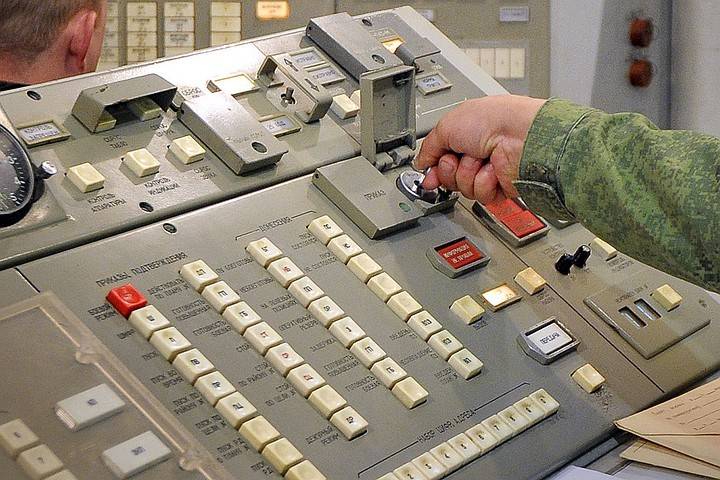
But even if the warning system about a nuclear attack does not work as expected, or if the country's leadership hesitates, there is still the "Perimeter", in other words: "Dead Hand". If impassive sensors detect the nuclear flame in which our Motherland burns, then automation will direct the flight of relay missiles, and they will ascend above the dying country, broadcasting permission-order for the use of nuclear weapons to everyone who can still hear it.
And many will hear. Even the allocation of 2-3 warheads to one missile silo or installation, generally speaking, does not guarantee the complete destruction of our strategic missile forces. Of course, with the massive use of US ballistic missiles, there will be a certain number of technical failures, and there will be separate technical failures. Some part of the warheads will go astray and fall farther away than their creators expected. Some of the nuclear warheads will be able to disable air defense systems.
What about mobile launchers? You need to understand that with the current level of technology, ballistic missiles are capable of hitting only stationary targets. Even if the Americans knew exactly the location of all our mobile launchers before they launched their ICBMs, this would not guarantee them success. During the flight of the Yarsa and Topoli missiles, it is quite possible to get out of attack - the flight time can be up to 40 minutes, while it will not be a mistake to assume that already at a distance of 12-15 km from the explosive point of the ammunition of the megaton class a mobile installation , the rocket and the calculation will remain operational.
That is, it is almost impossible to destroy our mobile ICBM systems even knowing their exact location in advance. But how would the Americans know him? Already in anything, but in disguise in the Russian Federation they know a lot - the traditions of “Invincible and legendary” are excellent in this respect. The only way to somehow find out the location of mobile Yars and Topol are spy satellites, but you need to understand that their capabilities are very limited. They are easy enough to mislead even the most ordinary mock-ups, not to mention the fact that such mock-ups can easily be equipped with devices that simulate the signature (thermal, etc.) of real launchers.
After all, even if out of more than one and a half hundred mine ballistic missiles only 5 R-36 survive, which received the affectionate nickname "Satan" in the west, and from more than a hundred mobile installations - a little less than half, that is, up to fifty "Yars", then only this will provide an opportunity to strike force in 200 nuclear warheads. The United States will not drive it into Neolithic, but inflicting unacceptable damage will guarantee for certain: American losses will amount to tens of millions. And all this is completely without taking into account two other components of our nuclear triad: air and sea.
But there is another extremely important aspect. The above-described attempt at a "counter-force" strike designed to destroy Russia's nuclear potential will give a chance for survival not even to millions, but to tens of millions of our fellow citizens. Indeed, using at least 2-3 “special warheads” to destroy each of approximately 300 ballistic missiles we have, it is necessary to isolate 600-900 warheads from 1 550 permitted by START III. Such a "disarming" strike will pull the mass of American nuclear weapons from our cities and other infrastructure and energy facilities of our country, and thereby save many lives of our citizens.
Suppose for a second that the country's leadership decides to eliminate the marine component of our nuclear triad. For the SSBN today there is about 150 ballistic missiles, and maybe more. And, theoretically arguing, instead of these missiles we could well deploy another 150 Yars mine or mobile based. In this case, the number of our ICBMs in the Strategic Missile Forces would have grown to about 450, and for a counter-force strike, the Americans would need up to the 1 350 nuclear warheads, which is obviously irrational, since there is very little left to defeat all other targets of the Russian Federation. So, when eliminating the naval component of the strategic nuclear forces in favor of the land, we finally make no sense to the concept of counter-force strike.
Why is it so important for us to make sense of it? For obvious reasons. The goal of any military aggression is a world in which the position of the aggressor would be better than it was before the war. No one in their right mind and sober memory will want to start a war in order to worsen their future. The only way that gives at least a ghostly hope for a relatively successful outcome of a nuclear war for the United States is to neutralize the enemy’s nuclear potential. That is, you can count on some kind of gain only if the enemy is destroyed by nuclear weapons, but does not have time to use his own. Take away from the United States (or any other country) the hope of neutralizing the nuclear weapons of a potential adversary - and he will never go to nuclear aggression, because it will never bring him peace that would be better than pre-war.
As you can see, in the case of the elimination of the marine component of the nuclear triad with the corresponding strengthening of the Strategic Missile Forces, this problem can well be solved. Moreover - there is every reason to believe that the Strategic Missile Forces and the strategic aviation even in their current state they are capable of causing unacceptable damage to the aggressor, even if the Russian Federation “spills” a large-scale nuclear missile attack.
But if so ... Then why do we even need naval strategic nuclear forces? What can the SSBN do that, which the Strategic Missile Forces cannot do?
At least in theory, the stealth of the submarine is better than that of the Yars or Topol mobile installation. At the same time, the limitations of land transport are higher than those of sea transport, which means that ballistic missiles that the SSBNs can carry are more powerful than their land mobile counterparts. In addition, the SSBN at sea is in principle not affected by strategic nuclear warheads - unless it is in the base.
All of the above (again, in theory) provides us with the best preservation of ICBMs for a retaliatory nuclear missile strike in case we nevertheless “wake up” a nuclear counter-force attack. But, firstly, in practice, everything can turn out not so good, and secondly - is it so important if we keep enough warheads even without the SSBN so that the aggressor doesn’t feel small? Here, the criterion “more-less” is not important here; sufficiency is important here.
In other words, the potential gain in stealth of the SSBN is not for us a truly critical advantage. It’s clear that this is useful, because “the stock doesn’t pull”, but we can do without it.
About the cost of MSNS
Alas, the SSBNs appear to be an extremely wasteful component of strategic nuclear forces. To begin with, such ships need to be armed with specialized ICBMs, unification with land-based missiles here, if possible, is only possible for individual nodes. In other words, the development of sea-based ICBMs alone is already an additional cost. But they also need to be produced, losing the "economies of scale" from large batches of "land" ICBMs - again costs. A submarine driven by atomic energy and capable of using ICBMs? It is a complex structure, no less technologically advanced than, for example, a modern spaceship. Well, she has a corresponding value - in 2011, numbers were mentioned indicating that the cost of one Borea exceeded 700 million dollars. The author does not have data on the cost of mine or mobile launchers, but it will not be a mistake to assume that they will be much cheaper for 16 missiles.
But that is not all. The fact is that there is such a thing as KOH, that is, the coefficient of operational voltage or the coefficient of operational use of forces, measured in the interval from 0 to 1. Its essence is that if, for example, a certain submarine was on combat duty on the 3 of the month in 2018, that is, a quarter of the total calendar time, then its KON for 2018 was 0,25.
So, it is obvious that the KOH of the same mine installation is significantly higher than that of the SSBN. The mine with the Voivode inside is on alert almost constantly, at the same time, even with the most heavily used American SSBNs, KOH usually does not exceed 0,5-0,6. In the USSR, KOH ships of a similar purpose ranged from 0,15 to 0,24. Simply put, the SSBN is a much more complex structure than a conventional missile mine, and the boat needs much more time for various kinds of preventive repairs, etc. etc.
So it turns out that in Soviet times, to ensure that the, for example, 16 sea-based ICBMs were in constant readiness for use, each 4 to 7 SSBN with 16 mines each was required, and in the USA, 2 SSBNs with the same number of missiles. But the SSBN is not just a thing in itself, it requires appropriate infrastructure for itself and other things. But that is not all. The fact is that the SSBNs are not a self-sufficient means of nuclear war and require significant forces to cover their deployment.
A single SSBN today is hardly vulnerable except in the ocean, which is so large that it is much more difficult to search for several such ships in it than the notorious needle in a haystack. Despite the numerous and powerful naval fleets of the United States and NATO, if a domestic submarine missile carrier managed to enter the ocean, then it can only be found there by accident. The problem is that even in ordinary peacetime it will be very, very difficult for the Russian SSBN to reach the Russian SSBN without the help of numerous general forces.
Yes, in the ocean our SSBNs can become "invisible", but their locations are known by all accounts. Foreign atomarians can watch our ships already at the exit from the bases, and, in the future, accompany them in the immediate readiness to use weapons upon receipt of an appropriate order. How real is this threat? In the article “Homeless Arctic”, Rear Admiral S. Zhandarov pointed out:
In the period of aggravation of the international situation, things will be even worse - the number of multipurpose nuclear submarines and diesel-electric submarines of NATO near our coast will increase, near our waters aviation will search for submarines, etc. In other words, in order for the SSBNs to be able to do their work, solid outfits of forces must cover their way out. Even in peacetime, we will urgently need a naval reconnaissance and targeting system to identify enemy forces off our coast, and plan the time of departure and SSBN routes so as not to come into contact with them. And in the military?
For some reason, many people believe that nuclear Armageddon must definitely strike like a bolt from the blue. But this is completely optional. In the past, the military and politicians considered other scenarios: for example, when the war of the USSR and NATO begins as a non-nuclear one, it continues as a limited-nuclear one, and only then develops into a full-scale nuclear conflict. Alas, no one has canceled this option today.
Suppose for a second that this will happen. As it will be? It is likely that the beginning of the war will be preceded by a certain period of exacerbation of the international situation. Prior to this exacerbation, obviously, only a part of the Russian SSBNs will be on combat duty, but with its beginning, realizing that “it seems that this is a war”, the fleet and country leadership will try to send as many SSBNs to the sea as possible, Conflicts are located in bases and are not ready for an immediate exit. Some of them will take several days, and some will take a month or two, some SSBNs will not be able to go to sea at all, for example, being stuck in a major overhaul. The period of tension can last for months, during this time it is really possible to seriously strengthen the deployed group of SSBNs with new ships. At the same time, the SSBNs will try to go to sea as they are ready, until the very start of Armageddon, that is, until there is someone (and from where) to go.
But every day this will make it all the more difficult, because the enemy will concentrate his naval and air forces, trying to open our deployment, to find and take our SSBNs for escort. Accordingly, we need forces capable of driving away, crowding out, and if the conflict at the first stage proceeds in a non-nuclear form, then destroy the enemy’s anti-aircraft defense systems, which create a danger for the deployment of our SSBNs. For this, dozens of surface, submarine, and air ships are needed: nuclear submarines and diesel-electric submarines, corvettes and minesweepers, fighter planes and aircraft (helicopters), and other and other. For each fleet, in which there are SSBNs.
Not that the same silo or mobile ICBM systems do not need cover. Even as they need! But still, protecting them from the attacks of long-range cruise missiles and creating a missile defense circuit based on the same C-500 will cost much less than the contents of the SSBN cover forces described above.
“But why even go out somewhere if our SSBNs can shoot from the pier,” someone will say. So it is, a number of goals in the USA can be covered by “Clubs” and “Blue” directly from the pier. But in order to shoot ICBMs off the coast of the SSBN, generally speaking, it is obviously redundant - missile mines will be much cheaper.
And so it turns out that according to the “cost / effectiveness” criterion, naval strategic nuclear forces consisting of SSBNs lose the same strategic missile forces. By redirecting the resources that we are currently spending on the construction and maintenance of the SSBN in favor of mine-based and mobile-based ICBMs, we will achieve the same effect, and even free up a ton of money to finance other branches and types of armed forces of the Russian Federation.
But what about our "sworn friends"?
“Well,” then the esteemed reader will say: “But why didn’t other countries put their SSBNs on the joke, and did not give priority to the ground and air components of nuclear forces?” The answer to this question is very simple. As for the United States, firstly, the appearance of submarine missile carriers - ballistic missile carriers occurred at a time when land-based ICBMs were still very imperfect. Then SSBNs were more than justified. In the future, traditions worked out - the American Navy always remained in competition with other branches of the US armed forces, and of course, was not going to lose its significance by abandoning SSBNs. And besides, the US Navy dominated the ocean: no matter how strong the Soviet Navy, it always remained in second place. Thus, the Americans never had such problems with deploying SSBNs with ICBMs on board, which are facing us. And another important aspect - SSBNs can get closer to our territory, in this case, the flight time of its ICBMs can be significantly reduced in comparison with missiles launched from the United States.
As for France and England, their nuclear arsenals are relatively small, as, in fact, are the territories of these countries. In other words, it is possible to place ICBMs in the Russian Federation so that the flying time of enemy cruise missiles can be several hours, but the British and French are deprived of this opportunity. But the combination of a small number of warheads and the small size of the territory can really lead to the fact that the strategic potential of England or France will be destroyed by a preemptive strike. So for them, the use of SSBNs looks quite reasonable and reasonable.
And for us? Perhaps the construction and use of the SSBNs today is really a luxury that we should not allow ourselves? Should we abandon the preservation of the strategic nuclear forces as part of the nuclear triad and focus on silo-based and mobile-based ICBMs and strategic aviation?
The answer to this question is very clear. No no and one more time no!
The first reason, more technical
When creating this or that weapon system, we should in no case be limited to evaluating its usefulness exclusively from the point of view of today. Because “not only everyone can watch tomorrow” (Klitschko), but the consequences of such decisions must be predicted for many decades to come. So today, when the flight time of the US ICBMs will be no less than 40 minutes, and their subsonic cruise missiles will fly even longer to our missile silos, the silo-based and mobile-based ICBMs can really retain the potential for a retaliatory strike.
But the situation can change dramatically with the proliferation of high-precision medium-range ballistic missiles (BRRS) and non-ballistic hypersonic missiles deployed, for example, in the same China. Which, generally speaking, today is slowly preparing to declare itself not only as an economic, but also as a political superpower, and which is located much closer to us than the United States itself. And the flight time of Chinese missiles to our mines, if that happens, will be much less. President of the United States D. Trump has refused the INF Treaty, so one can expect the appearance of American “first strike” missiles in Europe. Or somewhere else. As for hypersonic weapons, only the Russian Federation is now announcing the early entry into service of such missiles. But another 30-40 years will pass - and this kind of ammunition will cease to be a novelty and will be widely used. Scientific and technological progress cannot be stopped.
And there are questions to the near space. He, unlike airspace, is nothing, and what happens if someone wants to deploy a squad of spacecraft in the advanced version of the X-37 in low Earth orbits?
The American spaceship has already shown its ability to "hang out" in orbit for many months and return to earth. The combination of such a spaceplane with hypersonic weapons will be almost the ideal means of the first strike, which can be suddenly delivered during the passage of the spacecraft in orbit over enemy territory. Well, yes, there were some kind of treaties on non-proliferation of the arms race in space, but who would they stop? The INF Treaty was here too ...
That is, today the Strategic Missile Forces fully guarantee nuclear retaliation "to anyone who encroaches." But years so through 40 everything can radically change. And, abandoning the SSBN now, we run the risk of getting into a situation where by the time we completely lose any experience in the construction and operation of submarine missile carriers, the creation and maintenance of sea-based ICBMs, they will be the only way to preserve our strategic nuclear potential from " disarming "strike.
Here, of course, we can recall alternative means of delivery of nuclear weapons to the territory of a potential aggressor. That's right - the light did not converge on ballistic missiles, because you can create non-ballistic hypersonic missiles, or cruise missiles with a nuclear engine, or something else like that. But there are nuances. Under no circumstances will we put our strategic nuclear forces into orbit (unrealistic for technical and a number of other reasons), and any types of missiles placed on land can become the object of a disarming strike, it does not matter whether they are ballistic or not. So in a situation where any point of our immense Homeland may be under the gun of hypersonic weapons (and, God forbid, placed in outer space), only the SSBN can provide some real guarantees of the safety of the strategic nuclear forces.
The second reason, it’s also the main
This is a human factor. An attentive reader has probably noticed one feature of this article. The author took the liberty of asserting that with the existing technologies, the SSBNs are not the optimal means of conducting nuclear war on a “cost / effectiveness” scale. But the author did not mention a word that the main task of our strategic nuclear forces is not to lead, but to prevent a nuclear war.
The thing is that there is only one reason why Armageddon can erupt. This is a human error. There are no and cannot be winners in a nuclear war, but if suddenly someone mistakenly decides that it is still possible to win it ...
Professional military personnel (with the exception of some psychopathological cases) will always sensibly assess the consequences of a nuclear conflict. But they do not decide on the outbreak of war - this is the prerogative of politicians. And among them very different people come across.
Let us recall, for example, Saakashvili, who authorized the attack on Ossetia in 2008. He seriously believed that his small, but NATO-trained troops, if something happened, would easily deal with “these rusty Russians tanks". The reality of the war “08.08.08” turned out to be infinitely far from the ideas of the Georgian president, but would this really return the dead Russian and Ossetian citizens? But in fact, their deaths were the result of Saakashvili’s grossest error in assessing the combat potential of the Georgian and Russian armed forces.
Yes, of course, we can say that Saakashvili was an extremely odious politician, but ... Alas, the capitalist world does not need thinking people, but consumers: but the decline in the quality of education, “public IQ”, if you like, cannot but reflect on those in power. And we are no longer surprised when there is a threat from the high stands of the White House to send the 6 fleet to the shores of Belarus (for foreign readers - a landlocked country). Frankly, the author is not easy to imagine a similar blunder in the performance of the administration of the same R. Reagan. And it would be okay, it was a random reservation, but Jen Psaki won the sincere love of our fellow citizens, amusing us with such maxims almost weekly. What about Donald Trump? His statement that the United States is not obligated to help the Kurds, “because the Kurds did not help the United States in World War II, including the landing in Normandy,” is essentially absurd, but even if we assume that it was such a joke, then it admittedly completely inappropriate. And we hear more and more such frankly stupid remarks from American and European politicians ...
But mistakes are made even by the most intelligent people. Hitler and Napoleon should be reproached in many ways, but they were not fools for sure. Nevertheless, the first tragically underestimated the economic and military potential of the USSR and the will of the Soviet people, and the second did not think at all that the threat of the capture of Moscow might not force Alexander to end the war ... It seems to be not such difficult questions to understand, but not the “great Fuhrer ”, nor the truly great emperor of the French could handle them. And if even the smartest are mistaken, then what about the current American and European establishment?
And the premise of error in assessing the consequences of Armageddon exists today.
In the USA and in the West, the basis of nuclear forces is precisely the SSBN submarines, an analogue of our SSBNs. The explanation is very simple - invulnerability to a preemptive strike. Given NATO’s dominance at sea, this is certainly correct. And such reasoning has long become a common place understood by American and European taxpayers. It, in fact, has become a dogma. But such thoughts can lead to a simple mistake of perception: “We have SSBNs and our strategic nuclear forces are invulnerable. (It's right). But the Russians abandoned their SSBNs, which means their nuclear arsenal is vulnerable (but this is already a mistake!). ”
On the other hand, the Americans are constantly looking for ways to neutralize our strategic nuclear forces - hence all these theories of the "disarming" strike and so on. Means for such a strike are high-tech and expensive and are a tidbit for the defense industry. So it is not surprising that the lobby, “pushing” the adoption of such systems, with its advertising will create an advertising image of super-rockets that can effortlessly destroy the Russian nuclear potential ... And something terrible can happen - someone will believe in it.
So, the presence of a Russian SSBN triad will never allow such an error to happen. “We have invulnerable SSBNs, Russians have invulnerable SSBNs, well, let everything remain as it is.”
In other words, the SSBN is certainly not the most economical means of waging a global nuclear missile war. But at the same time, naval strategic nuclear forces are the most important tool for its prevention. So, the Russian Navy cannot abandon the SSBN - we will proceed from this axiom in our plans for the construction of the Russian Navy.
To be continued ...
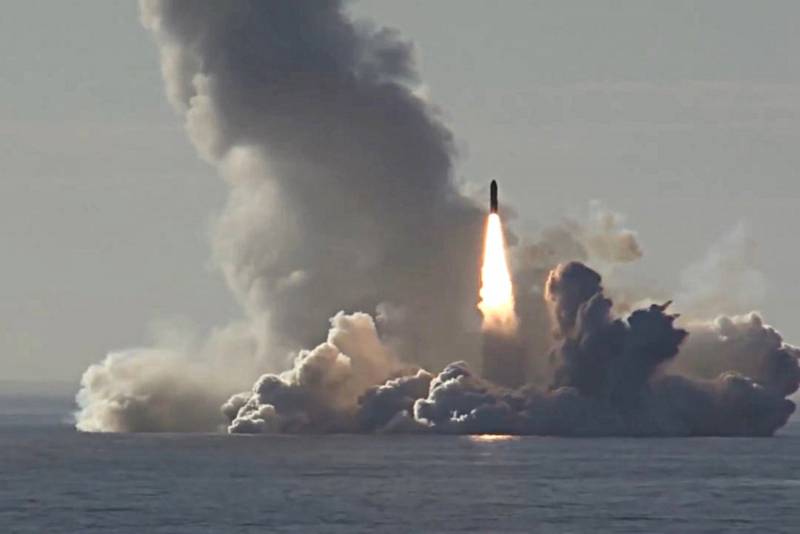
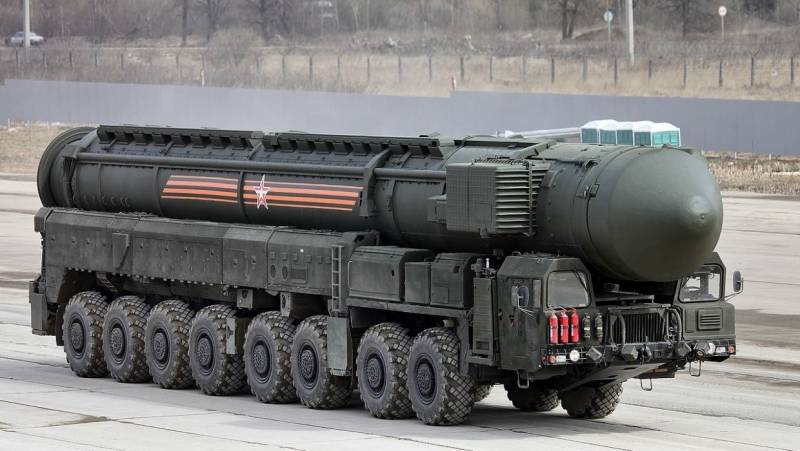
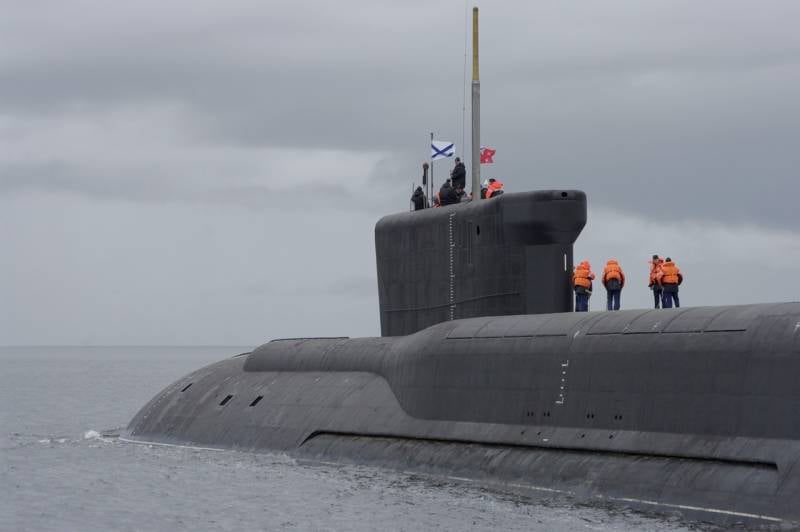
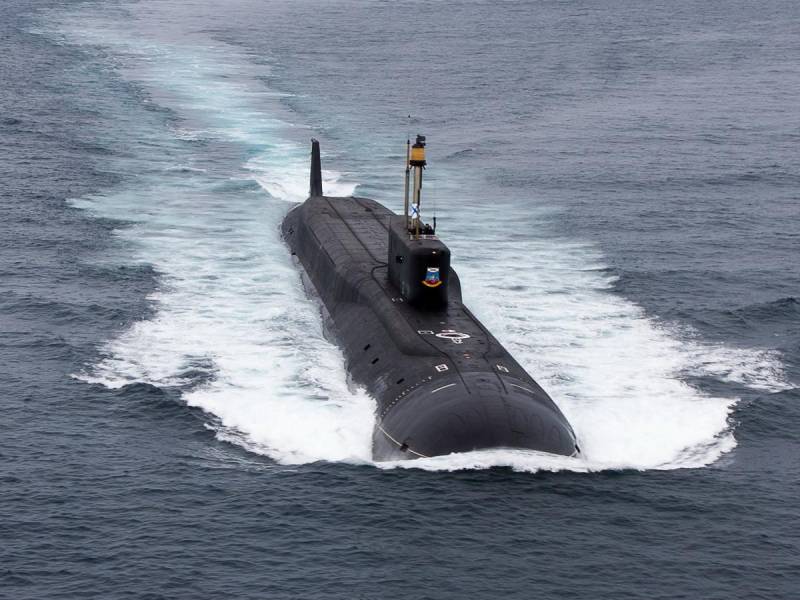
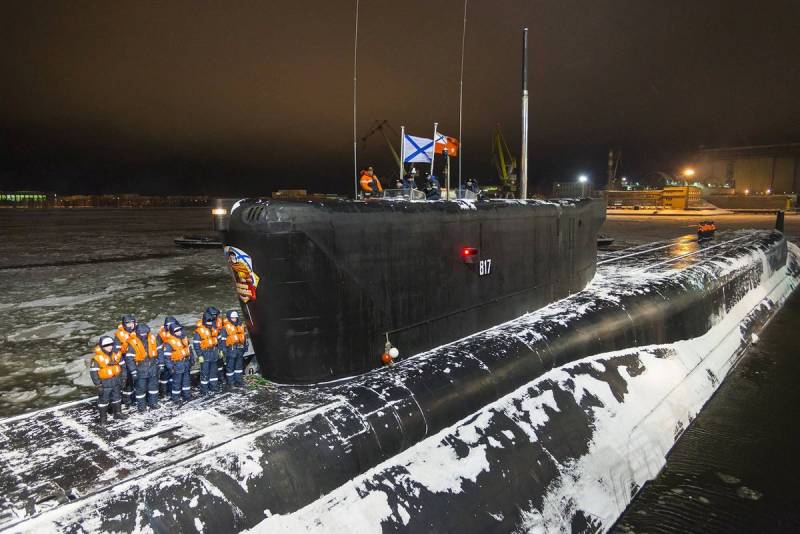
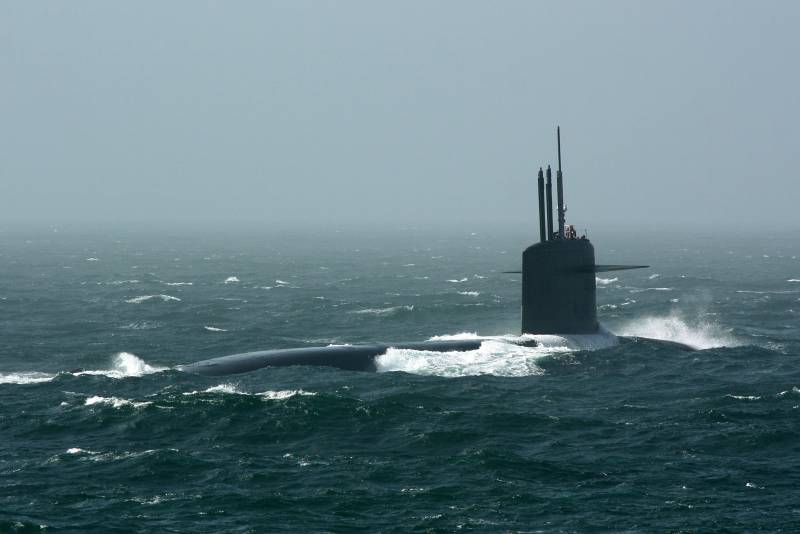
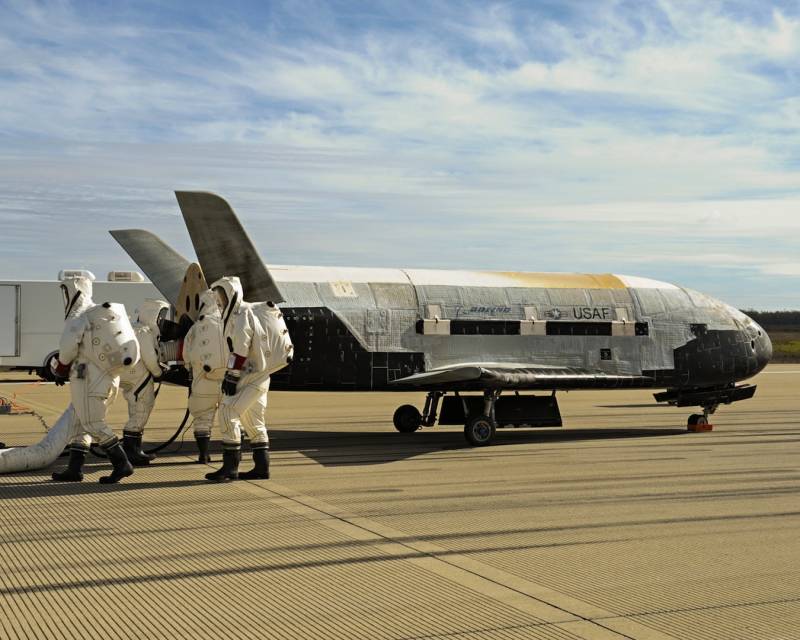
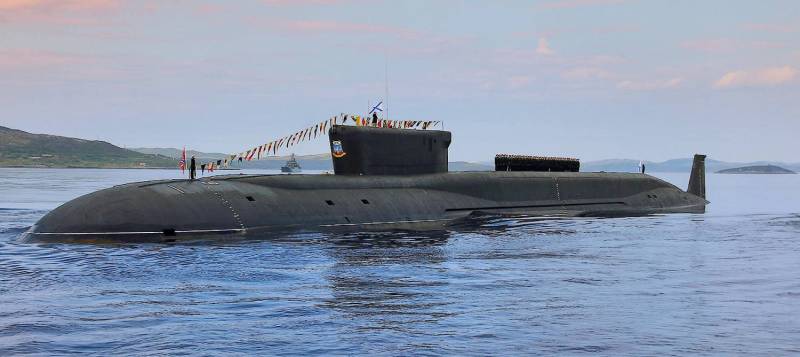
Information